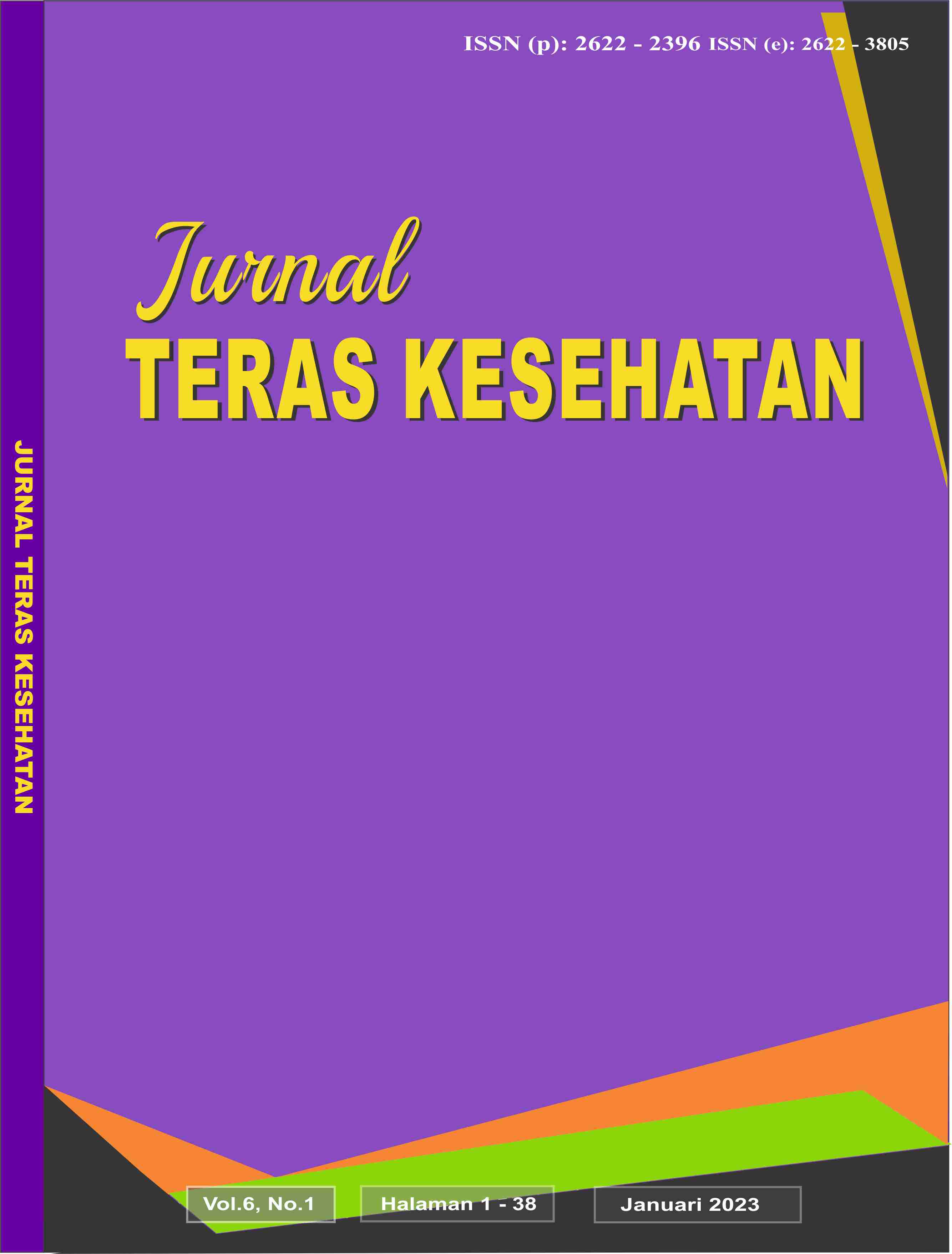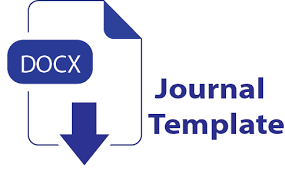Hubungan Antara Jumlah Kelahiran Balita Dengan Jumlah Balita Stunting
DOI:
https://doi.org/10.38215/jtkes.v6i1.106Keywords:
Nutrition, Stunting, ToddlersAbstract
Disorders experienced by babies caused by stunted growth are commonly called stunting. The number of sufferers in toddlers in Indonesia is very large, so this has received the attention of the government. Several factors cause stunting in toddlers, including lack of food intake and exclusive breastfeeding in toddlers. However, the percentage and the relationship between the number of babies born and the possibility of stunting are unknown, which is the basis for this research. The purpose of this study was to determine the relationship between the number of babies born and the possibility of stunting babies. Research conducted using regression analysis is used to determine the relationship between variables. The sample data used in this study were 157 toddlers. The data collection technique used is the collection of primary data and secondary data. Based on the results of the analysis conducted by the researchers, the correlation value between the number of babies born and the number of stunted babies is 0.38 (very low category). Therefore, it can be concluded that the relationship between the number of babies born and the likelihood of stunting babies has a very low significance level.
Downloads
References
Alfarisi, R., Nurmalasari, Y., & Nabilla, S. (2019). Status Gizi Ibu Hamil Dapat Menyebabkan Kejadian Stunting Pada Balita. Jurnal Kebidanan Malahayati, 5(3), 271–278. https://doi.org/10.33024/jkm.v5i3.1404
Anggraini, W., Febriawati, H., & Amin, M. (2022). Akses Jamban Sehat Pada Balita Stunting. Jurnal Keperawatan Silampari, 6, 2003–2005.
Harleni, H., Yanti, R., & Wahyu Diana, N. (2022). Pengaruh Pendidikan Kesehatan Dengan Metode Brainstorming Booklet Dan Leaflet Terhadap Pengetahuan Dan Sikap Ibu Balita Stunting Di Puskesmas Malalak Tahun 2021. Ensiklopedia of Journal, 4(3), 148–158. https://doi.org/10.33559/eoj.v4i3.1051
Khoiron, K., Rokhmah, D., Astuti, N., Nurika, G., & Putra, D. (2022). Pencegahan Stunting Melalui Penguatan Peran Kader Gizi dan Ibu Hamil Serta Ibu Menyusui Melalui Participatory Hygiene and Sanitation Transformation (PHAST). ABDIKAN: Jurnal Pengabdian Masyarakat Bidang Sains Dan Teknologi, 1(1), 74–80. https://doi.org/10.55123/abdikan.v1i1.128
Komalasari, K., Supriati, E., Sanjaya, R., & Ifayanti, H. (2020). Faktor-Faktor Penyebab Kejadian Stunting Pada Balita. Majalah Kesehatan Indonesia, 1(2), 51–56. https://doi.org/10.47679/makein.202010
Kusumawati, D. D., & Tri Budiarti, S. (2021). Hubungan Tingkat Pendidikan Dengan Kejadian Balita Stunting. Jika, 6(1), 2598–3857.
Louis, S. L., Mirania, A. N., & Yuniarti, E. (2022). Hubungan Pemberian ASI Eksklusif dengan Kejadian Stunting pada Anak Balita. Maternal & Neonatal Health Journal, 3(1), 7–11. https://doi.org/10.37010/mnhj.v3i1.498
Ngura, E. T. (2022). Upaya Pencegahan Stunting melalui Pemanfaatan Pangan Lokal Ubi untuk Meningkatkan Asupan Gizi Ibu Hamil. Indonesian Journal of Early Childhood: Jurnal Dunia Anak Usia Dini, 4(1), 292. https://doi.org/10.35473/ijec.v4i1.1318
Pambudi, Y. T., Widorotama, A., & Syakur F, A. (2022). Korelasi Efikasi Diri dan Motivasi Belajar dengan Hasil Belajar Mahasiswa Pendidikan Jasmani. Jurnal Porkes, 5(1), 158–167. https://doi.org/10.29408/porkes.v5i1.5350
Rustiyani, L., & Susilo, R. (2020). Analisis Faktor yang Menyebabkan Stunting di Wilayah Kerja Puskesmas Kemangkon. Human Care Journal, 5(4), 1025–1033. https://ojs.fdk.ac.id/index.php/humancare/article/view/837
Sarbaini, Zukrianto, & Nazaruddin. (2022). Pengaruh Tingkat Kemiskinan Terhadap Pembangunan Rumah Layak Huni Di Provinsi Riau Menggunakan Metode Analisis Regresi Sederhana. Jurnal Teknologi Dan Manajemen Industri Terapan, 1(3), 131–136.
Sitompul, S. (2022). Faktor Enterprise Risk Management Pada Industri Barang Konsumsi Di Bei. SINTAKSIS: Jurnal Ilmiah Pendidikan, 2(2), 52–61. https://jurnalsintaksis.com/index.php/sts/article/view/62%0Ahttps://jurnalsintaksis.com/index.php/sts/article/download/62/62
Tampubolon, D. (2020). Kebijakan Intervensi Penanganan Stunting Terintegrasi. Jurnal Kebijakan Publik, 11(1), 25. https://doi.org/10.31258/jkp.11.1.p.25-32
Waroh, Y. K. (2019). Pemberian Makanan Tambahan Sebagai Upaya Penanganan Stunting Pada Balita Di Indonesia. Embrio, 11(1), 47–54. https://doi.org/10.36456/embrio.vol11.no1.a1852
Widyastuti, Y., Rahayu, U. F. N., Mulyana, T., & Khoiri, A. M. (2022). Sosialisasi Stunting dan Upaya Pencegahannya Di Desa Padarincang, Kecamatan Padarincang, Kabupaten Serang. Komunitas, 2(1), 38–45.

Downloads
Published
Issue
Section
License
Copyright (c) 2023 Jurnal Teras Kesehatan

This work is licensed under a Creative Commons Attribution-ShareAlike 4.0 International License.
Authors who publish articles in Jurnal Teras Kesehatan agree to the following terms:
- Authors retain copyright of the article and grant the journal the right of first publication with the work simultaneously licensed under a CC-BY-SA or the Creative Commons Attribution–ShareAlike License.
- Authors can enter into separate, additional contractual arrangements for the non-exclusive distribution of the journal's published version of the work (e.g., post it to an institutional repository or publish it in a book), with an acknowledgment of its initial publication in this journal.
Authors are permitted and encouraged to post their work online (e.g., in institutional repositories or on their website) prior to and during the submission process, as it can lead to productive exchanges, as well as earlier and greater citation of published work (See The Effect of Open Access)











